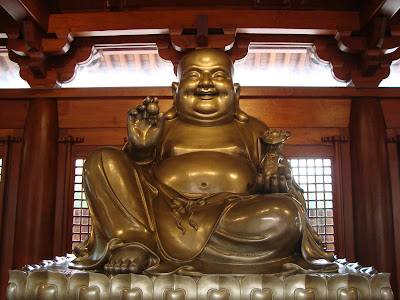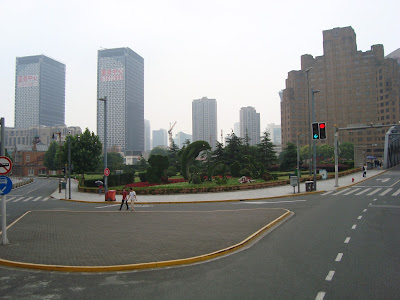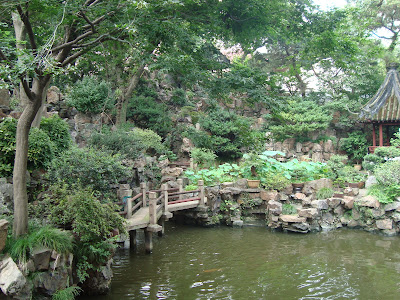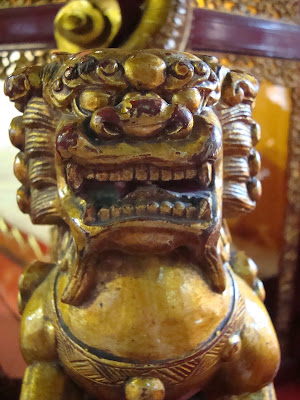Recently I’ve been reading a book called Hauntings and Apparitions: An Investigation of the Evidence (1982), by New Zealand-born writer Andrew Mackenzie. It’s a kind of compendium-cum-analysis of a number of cases collected over time by the British Society for Psychical Research, from a series edited by Brian Inglis, one of the true heavyweights in the field.
It’s a substantial and scholarly book, but perhaps the most important thing in it comes near the end, where he reports a conversation he once had with Rosalind Heywood:
When I first started writing about apparitions I made the mistake of studying them in isolation, rather than as part of the structure of psychical research as a whole. ... [T]alking over the subject with Rosalind Heywood, particularly during the last year of her life, my outlook gradually changed. I eventually realised that instead of asking, 'What is an apparition?' I should be asking, 'What is man?' It was as if we were discussing the nature of shadows instead of the nature of who or what casts the shadows. When I put this conclusion to Mrs Heywood her reply was 'But of course' [p.254]In other words, the most important thing about any haunting, or supernatural experience generally, is who it happens to. It’s rather like dream interpretation: there’s no way of decoding dream symbols until you find out what they mean to the person who’s had the dream. And if they won’t tell you, there are still a few ways of finding out.
Taking a couple of basic Freudian rules-of-thumb as our guiding points, then:
- We assert most vociferously that which we’re least certain of.
- We’re most haunted by that which we’ve worked hardest to deny and eradicate from our lives.
The claim: “I’m a brilliant teacher,” for instance, can be translated more accurately as: “I secretly suspect I’m a terrible teacher.”
Rabid homophobia, for instance, is generally assumed to mask strong homoerotic tendencies (as in the movie American Beauty).
On the one hand, for the coloniser, the intense guilt of having dispossessed someone of all control and ownership of their lives tends to make you portray them as full of sinister purpose and secret knowledge.
On the other hand, for the colonised, there’s a certain advantage to playing up to this scenario. When you lack power in one world, you’re forced to assert it in the other. Hence the tohungas, obeah men, voodoo priests, and even (to go back a bit) druids who allegedly channel access to the other side.
Anyway, reading Mackenzie's book got me to thinking a bit more about the local product. Here are a few of the texts I myself have collected on the subject:
- Jenkin, Robyn. New Zealand Mysteries. 1970. Fontana Silver Fern. Auckland & London: Collins, 1976.
- Jenkin, Robyn. The New Zealand Ghost Book. Wellington: A. H. & A. W. Reed, 1978.
- Shanks, Grant, and Tahu Potiki, eds. Where No Birds Sing: Tales of the Supernatural in Aotearoa. Christchurch: Shoal Bay Press, 1998.
- Shanks, Grant, and Tahu Potiki, eds. When the Wind Calls Your Name: Tales of the Supernatural in Aotearoa. Christchurch: Shoal Bay Press, 1999.
- Miller, Julie & Grant Osborn. Ghost Hunt: True New Zealand Ghost Stories. Auckland: TVNZ / Reed, 2005.
- Miller, Julie, & Grant Osborn. Unexplained New Zealand: Ghosts, UFOs & Mysterious Creatures. Auckland: Reed Publishing (NZ) Ltd., 2007.
- Wallbank, Mark. Voices in the Walls - Living the paranormal in New Zealand. Auckland: Haunted Auckland, 2015.
- Wallbank, Mark. Talking to Shadows - A New Zealand paranormal research team's search for answers. Auckland: Haunted Auckland, 2016.
I guess one’s first observation might be that such books tend to come in pairs: perhaps because they generally elicit such an unexpectedly enthusiastic response as to spawn a sequel, but then the essentially sterile and repetitive nature of such narratives becomes apparent, and the impulse dies.
The most interesting among this set of books, to me, at any rate, are the pair edited by Grant Shanks and Tahu Potiki. They seem to take the most original and homegrown view of the subject.
Robyn Jenkins' two books are standard pieces of journalism, collecting well-known - though undoubtedly useful - feature stories about the Tamil Bell, the Spanish helmet and other old chestnuts. The two books by Julie Miller and Grant Osborn are dominated by the format of the (very entertaining - though not entirely convincing) TV series that gave rise to them. Mark Wallbank's two long books record a series of investigations conducted for the Haunted Auckland website.
What one might say of these books is that they mostly echo overseas trends: the local TV show Ghost Hunt was a slightly slicker version of Yvette Fielding and Derek Acorah's series Most Haunted. Robyn Jenkins' books resemble Australian and Canadian versions of the same thing. Mark Wallbanks' website is not unlike a host of other such image-heavy sites (as amusingly chronicled in the 2011 movie The Innkeepers).
In Shanks and Potiki's books, however - perhaps because they collect a series of (allegedly) true experiences by many different people with minimal editorial intervention - one begins to get a glimpse of what might be called the classic NZ ghost story.
The story runs essentially as follows (no one story in either book has all of these features, but very few are without one or two of them):
A young family, a farmer, or a long-lost relative of some old family moves into a new house / farm / estate. They promptly start to make changes or improvements, ignoring all warnings from neighbours / locals.
Manifestations start to appear. These can take the form of a string of bad luck, shadowy presences in the house, or just a general feeling of depression and doom.
Things start to get so bad that they are forced to ask for help. Someone from the district offers to have a word to the "old people" at the marae.
A group of elders duly appear, walk the land, recite a few words, and the trouble recedes. This may be accompanied by the restoration of a bone, a grave or an artefact which has been tampered with somehow.
Thereafter, everything runs more smoothly, in an atmosphere of mutual respect.
Alternatively, the farmer, or pater familias, refuses all help, and is either forced to move away or dies in mysterious circumstances (an upturned tractor, perhaps - or a septic wound).
First of all, one should note the strong focus on haunted spaces, rather than haunted people: these spaces can include houses, and farms, but also patches of bush (as in the title story of Shanks & Potiki's first book, "Where No Birds Sing"), river valleys, and mountain passes: wild, deserted areas, essentially.
The problems generally start due to some breach of tapu (deliberate or accidental). Entering a forbidden area or (particularly) removing a bone or a piece of carving from its seemingly accidental location in a sand-dune or old tree-trunk leads to dire consequences.
In almost all cases the people in trouble have to talk to someone local, who brings in some elders from a nearby marae or (occasionally) further afield. They walk through the space and speak karakia, and everything settles down.
The alternative to this is death in suspicious circumstances for the unrepentant farmer who's ploughed up a tapu area, or city-slicker who won't (or can't) return a valuable artefact.
The phenomena mentioned in these stories include giant eels and dogs as well as haunted patches of bush, mysterious fires, and time-slips. All are seen to relate to Māori folklore, in one way or another.
A friend told us recently of a walk he took with his girlfriend. They started off quite late in the day, and couldn't reach the hut they were planning to stay in. Instead, they pitched their tent in an inviting piece of bush. The place made them feel so uncomfortable, though, that they just couldn't stay there. So they packed up the tent and walked on until they reached the hut. Later, discussing their experience with another tramper, they were told that the place they'd stopped in was tapu. His girlfriend in particular was quite shaken by it. He said that there was no possibility of remaining: the imperative to leave was just too strong.
Some friends of my parents once told us of an experience they had while boating on Lake Taupo, when they discovered some old cliff-paintings and artefacts. The day immediately clouded over and the waves got so high that they had to wait for some time for them to subside before they were able to get home. Everything had been sunny and bright until that precise moment.
What is one to say to such "authentic" experiences? Perhaps just that we more recent immigrants to New Zealand can never be quite unconscious of what Sam Neill, in his classic documentary Cinema of Unease (1995) refers to as "the dark, threatening land." Or perhaps Allen Curnow said it better in "House and Land" (1941), referring to:
what great gloom
Stands in a land of settlers
With never a soul at home.






















































